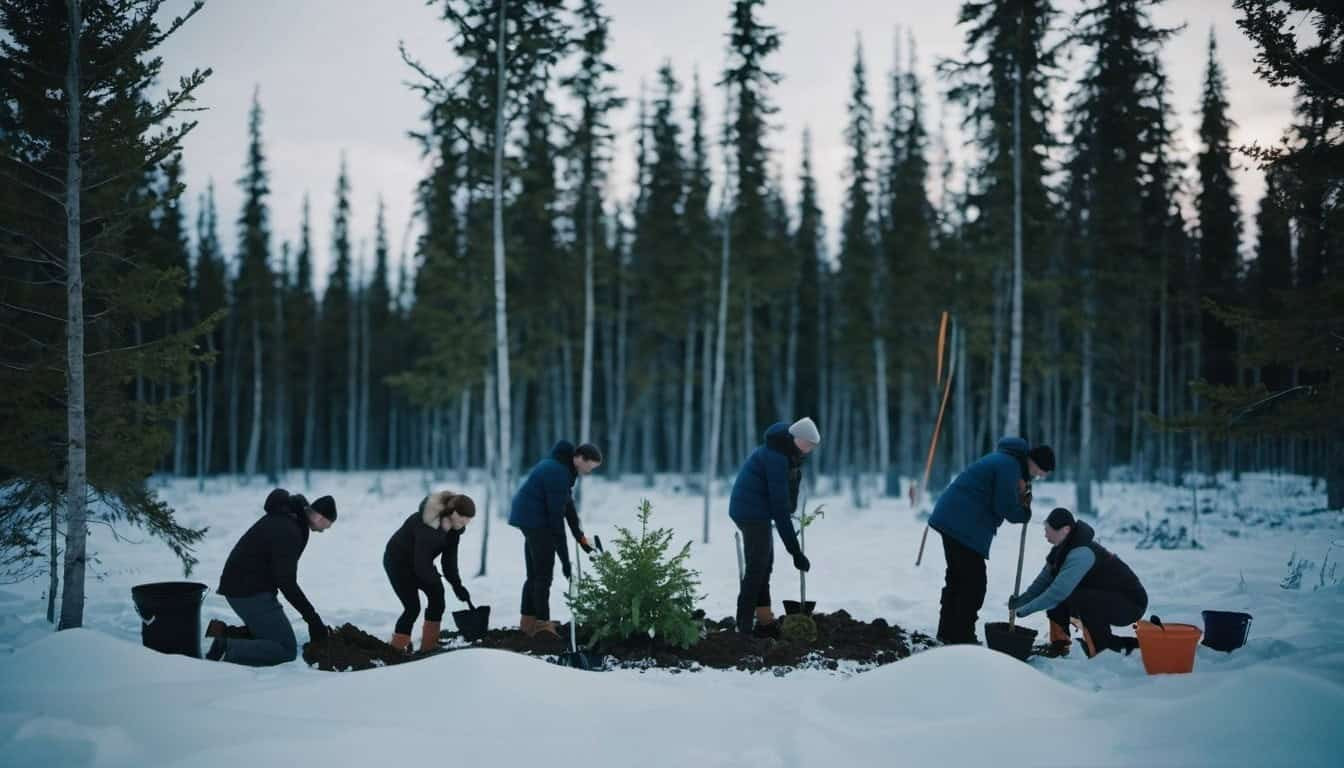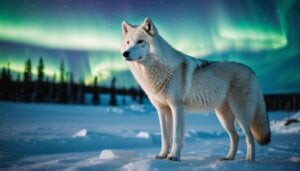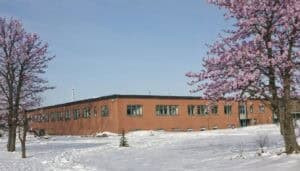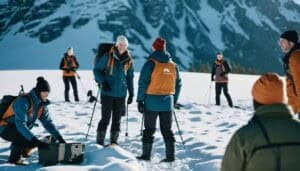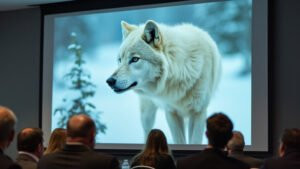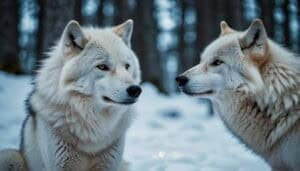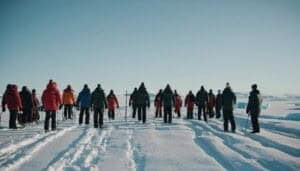Introduction
Protecting Arctic wolf habitats is crucial for maintaining biodiversity and ensuring the survival of these majestic creatures
This article explores various ways local communities can get involved in conservation efforts. We will delve into specific community actions, effective fundraising strategies, and collaboration with conservation organizations
Additionally, we will highlight the importance of education and awareness programs, the role of local governments and citizen science, and how to address environmental challenges impacting Arctic wolves. By understanding these key areas, communities can take meaningful steps to safeguard the habitats of Arctic wolves for future generations
Community Actions to Protect Arctic Wolf Habitats
Protecting Arctic wolf habitats requires concerted efforts from local communities. Through a variety of actions, communities can play a crucial role in conserving these environments and ensuring the survival of Arctic wolves
This section will explore specific actions communities can take, effective fundraising strategies for conservation, and ways to collaborate with conservation organizations
Specific Actions Communities Can Take
One of the most direct ways communities can protect Arctic wolf habitats is by engaging in habitat restoration activities
This includes planting trees and restoring natural vegetation, which can help recreate the natural environment that Arctic wolves rely on for shelter and hunting. For instance, planting native species that thrive in Arctic conditions can provide crucial cover and prey opportunities for wolves
Reducing pollution and waste in Arctic regions is another critical action. Communities can organize clean-up events to remove litter and pollutants that can degrade habitats. Reducing the use of single-use plastics and promoting recycling programs can also minimize the impact of human activities on these fragile ecosystems
Creating wildlife corridors is an essential strategy for connecting fragmented habitats. These corridors allow Arctic wolves to move freely between different areas, ensuring they have access to a broader range of resources
Communities can work with local authorities and landowners to establish protected pathways that facilitate the safe passage of wildlife
Fundraising Strategies for Conservation
Effective fundraising is vital for supporting conservation efforts. Communities can organize events such as charity runs, bake sales, or silent auctions to raise funds for Arctic wolf habitat protection. These events not only generate financial support but also raise awareness about the importance of conservation
Partnering with local businesses can also be a fruitful strategy. Businesses can sponsor conservation projects, provide in-kind donations, or match community fundraising efforts. This collaboration can enhance the visibility of conservation initiatives and secure additional resources
Online crowdfunding campaigns offer another avenue for raising funds. Platforms like GoFundMe or Kickstarter enable communities to reach a broader audience and attract donations from people passionate about wildlife conservation
Successful campaigns often include compelling stories and visuals that highlight the urgency of protecting Arctic wolf habitats
Collaborating with Conservation Organizations
Collaboration with conservation organizations is crucial for amplifying community efforts
These organizations often have the expertise, resources, and networks necessary to implement effective conservation strategies. By partnering with groups such as the World Wildlife Fund (WWF) or local wildlife trusts, communities can gain access to valuable knowledge and support
Participating in conservation programs organized by these groups can also be highly beneficial. Programs such as habitat restoration projects, wildlife monitoring, and educational outreach provide opportunities for community members to get involved directly in conservation activities
Sharing resources and information with conservation organizations can further strengthen efforts. This includes contributing local knowledge about wildlife and habitats, which can be crucial for developing targeted conservation strategies
Regular communication and collaboration ensure that community actions align with broader conservation goals and maximize impact
Through these community actions, fundraising strategies, and collaborations, local communities can make a significant difference in protecting Arctic wolf habitats. These efforts not only help preserve the natural environment but also foster a sense of stewardship and connection to the wildlife that inhabit these regions
Education and Awareness for Arctic Wolf Conservation
Education and awareness are fundamental components in the conservation of Arctic wolf habitats. By informing and engaging the public, communities can build a strong foundation of support for conservation initiatives
This section will cover school-based initiatives and youth involvement, community workshops and seminars, and public awareness campaigns
School-Based Initiatives and Youth Involvement
Involving schools in Arctic wolf conservation is an effective way to foster a sense of environmental responsibility among young people
Schools can incorporate Arctic wolf conservation topics into their science and geography curricula, teaching students about the ecological importance of these predators and the challenges they face
Field trips to natural history museums, wildlife reserves, or Arctic habitats (if feasible) can provide students with hands-on learning experiences. These excursions help students understand the real-world implications of habitat conservation and can inspire them to take action
Youth involvement in conservation projects can also have a profound impact
School clubs focused on environmental science or wildlife can organize activities such as habitat clean-ups, tree planting events, and fundraising campaigns. These activities not only contribute to conservation efforts but also empower students to become advocates for wildlife protection
Community Workshops and Seminars
Community workshops and seminars are excellent platforms for spreading knowledge about Arctic wolf conservation
These events can be organized by local environmental groups, wildlife organizations, or community centers. Experts in wildlife biology, conservation, and ecology can be invited to speak, providing valuable insights and answering questions from the public
Workshops can cover a range of topics, including the biology and behavior of Arctic wolves, the threats they face, and practical steps individuals can take to support habitat conservation. Hands-on activities such as wildlife tracking demonstrations, habitat restoration techniques, and interactive exhibits can enhance learning and engagement
Seminars can also highlight the importance of community involvement in conservation efforts. By showcasing successful case studies and local initiatives, these events can motivate attendees to participate in or start their own conservation projects
Providing resources and guidance on how to get involved can turn awareness into action
Public Awareness Campaigns
Public awareness campaigns play a crucial role in mobilizing community support for Arctic wolf conservation
These campaigns can utilize various media channels, including social media, local newspapers, radio, and television, to reach a broad audience. The goal is to educate the public about the importance of Arctic wolves and the actions needed to protect their habitats
Effective campaigns often feature compelling stories and imagery that resonate with the audience. For example, sharing stories of individual Arctic wolves and their struggles can create an emotional connection and a sense of urgency. High-quality photographs and videos showcasing the beauty of Arctic landscapes and wildlife can further captivate and inspire viewers
Collaborating with influencers, celebrities, or local leaders can amplify the reach of these campaigns. These figures can use their platforms to advocate for conservation, drawing attention to the cause and encouraging their followers to get involved
Public events such as conservation fairs, exhibitions, and film screenings can also raise awareness. These events provide opportunities for community members to learn more about Arctic wolves and engage with conservation efforts in a social and interactive setting
By implementing these education and awareness strategies, communities can build a strong foundation of knowledge and support for Arctic wolf conservation
Educated and informed citizens are more likely to take action and contribute to the protection of these vital habitats, ensuring the survival of Arctic wolves for future generations
Role of Local Governments and Citizen Science
Local governments and citizen science initiatives play pivotal roles in protecting Arctic wolf habitats. This section explores how local governments can implement environmental regulations, fund and support projects, and how citizen science can contribute to conservation efforts
Implementing Environmental Regulations
Local governments are essential in establishing and enforcing environmental regulations that protect Arctic wolf habitats. By creating and implementing policies that limit industrial activities, restrict land development, and control pollution, local authorities can help preserve the natural environments where Arctic wolves live
Zoning laws that designate protected areas and wildlife reserves can prevent habitat fragmentation and ensure that Arctic wolves have sufficient space to roam and hunt. Governments can also establish buffer zones around critical habitats to minimize human disturbances
Moreover, local governments can enforce stricter penalties for activities that harm the environment, such as illegal logging, mining, and poaching. By holding violators accountable, these regulations can deter harmful practices and promote sustainable use of natural resources
Funding and Supporting Projects
Providing financial support for conservation projects is another vital role of local governments
Allocating budgetary funds to habitat restoration, wildlife monitoring, and community education initiatives can significantly enhance conservation efforts. Local governments can also apply for grants from national and international conservation organizations to supplement their resources
Supporting infrastructure development that benefits conservation is crucial. This includes building facilities for wildlife research, setting up monitoring stations, and creating eco-friendly tourism initiatives that raise awareness and generate revenue for conservation
Local governments can also incentivize private sector participation in conservation efforts. Offering tax breaks or subsidies to businesses that adopt environmentally friendly practices or contribute to conservation projects can foster greater corporate responsibility and involvement
Citizen Science Contributions
Citizen science involves public participation in scientific research and data collection, and it can be a powerful tool in conservation. Local communities can contribute valuable information about Arctic wolf populations, their movements, and habitat conditions through citizen science projects
Wildlife tracking is one area where citizen science can be particularly effective. Community members can report sightings of Arctic wolves, noting the location, time, and any observed behaviors. This data can help scientists and conservationists monitor wolf populations and identify critical habitats that need protection
Habitat condition surveys conducted by volunteers can provide insights into the health of Arctic ecosystems. By recording information on vegetation, prey availability, and environmental changes, citizens can help identify areas that require restoration or conservation efforts
Educational workshops and training sessions can equip community members with the skills needed to participate in citizen science projects effectively. Teaching residents how to use GPS devices, data collection apps, and wildlife identification techniques ensures that the information gathered is accurate and useful
Collaborations between local governments, research institutions, and citizen science initiatives can enhance the overall impact of conservation efforts. By sharing data and findings, these groups can develop comprehensive strategies for protecting Arctic wolf habitats and addressing emerging threats
Through the implementation of environmental regulations, financial support for conservation projects, and active participation in citizen science, local governments and communities can play a critical role in safeguarding Arctic wolf habitats. These combined efforts ensure a multifaceted approach to conservation, leveraging the strengths and resources of various stakeholders to achieve sustainable outcomes
Addressing Environmental Challenges
Environmental challenges pose significant threats to Arctic wolf habitats. This section will explore the impact of climate change and human activities, the role of community-based monitoring, and best practices for creating and maintaining sanctuaries
Impact of Climate Change and Human Activities
Climate change is one of the most pressing threats to Arctic wolf habitats. Rising temperatures lead to the melting of sea ice, which in turn affects the availability of prey such as seals
Changes in temperature and precipitation patterns can also alter the vegetation and overall ecosystem, making it difficult for Arctic wolves to find food and shelter
Human activities such as industrial development, oil and gas exploration, and mining further exacerbate habitat loss. These activities can lead to habitat fragmentation, pollution, and disturbances that drive Arctic wolves away from their natural environments
The construction of roads and pipelines, for example, can create barriers that restrict wolf movements and access to critical areas
Communities can help mitigate these impacts by advocating for responsible development practices. This includes supporting policies that limit industrial activities in sensitive areas, promoting renewable energy sources, and participating in environmental impact assessments to ensure that developments are sustainable and minimally disruptive to wildlife
Community-Based Monitoring
Community-based monitoring involves local residents actively participating in the observation and recording of environmental changes. This grassroots approach can be highly effective in detecting early signs of habitat degradation and other threats to Arctic wolves
Setting up monitoring networks allows community members to gather data on key environmental indicators such as temperature changes, snow cover, and the presence of pollutants. This information can be used to track trends over time and identify areas in need of conservation efforts
Using technology for data collection, such as remote sensing devices, GPS trackers, and smartphone apps, can enhance the accuracy and efficiency of community-based monitoring. These tools enable volunteers to record and share data in real-time, providing valuable information for researchers and policymakers
Regular reporting and acting on findings are crucial components of successful community-based monitoring. By organizing regular meetings and sharing results with local authorities and conservation organizations, communities can ensure that their observations lead to concrete actions and policy changes
Creating and Maintaining Sanctuaries
Sanctuaries are protected areas designed to provide safe havens for wildlife, including Arctic wolves. Establishing these sanctuaries requires careful planning and collaboration between local communities, governments, and conservation organizations
Selecting suitable locations for sanctuaries involves identifying areas with minimal human disturbance, abundant prey, and suitable habitats for denning and raising pups. This often requires detailed ecological assessments and consultations with wildlife experts
Managing human-wildlife interaction within sanctuaries is essential to ensure the safety and well-being of Arctic wolves. This can include setting guidelines for responsible tourism, enforcing regulations that minimize disturbances, and creating designated observation areas that allow visitors to view wildlife without causing harm
Ensuring the long-term sustainability of sanctuaries involves ongoing maintenance and monitoring
This includes regular habitat restoration activities, such as reforestation and erosion control, as well as continuous tracking of wolf populations and health. Engaging local communities in the management of sanctuaries fosters a sense of ownership and commitment to conservation efforts
Through addressing the impacts of climate change and human activities, implementing community-based monitoring, and creating and maintaining sanctuaries, local communities can significantly contribute to the protection of Arctic wolf habitats. These efforts help preserve the delicate balance of Arctic ecosystems and ensure the survival of Arctic wolves for future generations
Conclusion
Protecting Arctic wolf habitats requires a multifaceted approach involving local communities, governments, and conservation organizations
Community actions such as habitat restoration, reducing pollution, and creating wildlife corridors play a crucial role in preserving these environments. Effective fundraising strategies and collaborations with conservation organizations amplify these efforts, providing necessary resources and expertise
Education and awareness initiatives, including school-based programs, community workshops, and public awareness campaigns, are essential for building a strong foundation of support for Arctic wolf conservation. By educating the public and fostering a sense of environmental responsibility, communities can ensure sustained efforts toward habitat protection
Local governments contribute significantly through implementing and enforcing environmental regulations, funding conservation projects, and supporting citizen science initiatives. Citizen science, in particular, empowers residents to actively participate in data collection and monitoring, providing valuable insights into Arctic wolf populations and habitat conditions
Addressing environmental challenges such as climate change and human activities is vital for the long-term protection of Arctic wolf habitats. Community-based monitoring and the establishment of sanctuaries offer practical solutions to mitigate these impacts and ensure safe havens for wildlife
By combining these strategies, local communities can make a substantial difference in conserving Arctic wolf habitats, ensuring the survival of these majestic creatures for generations to come. Through collective action, education, and sustainable practices, we can protect the Arctic wolves and the ecosystems they depend on
